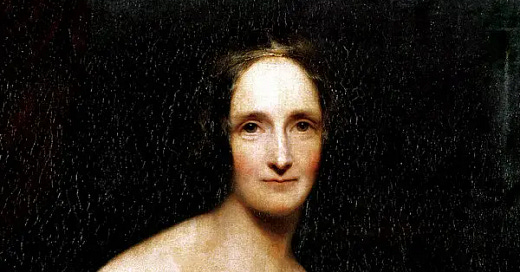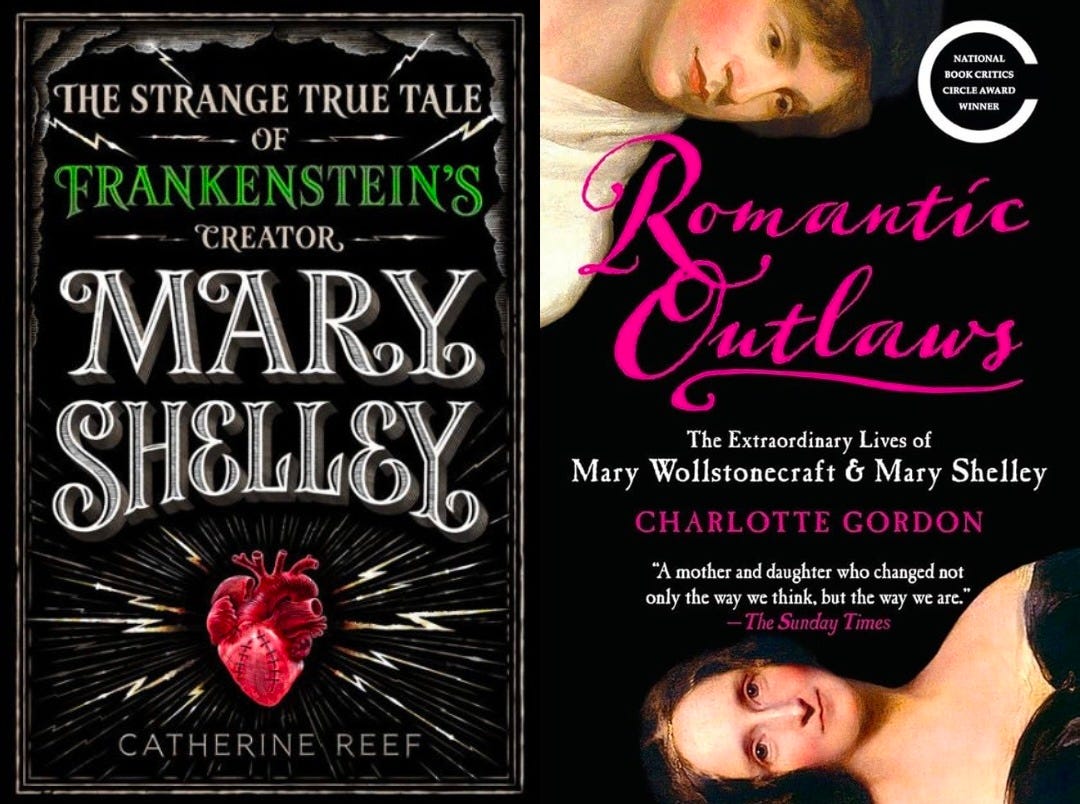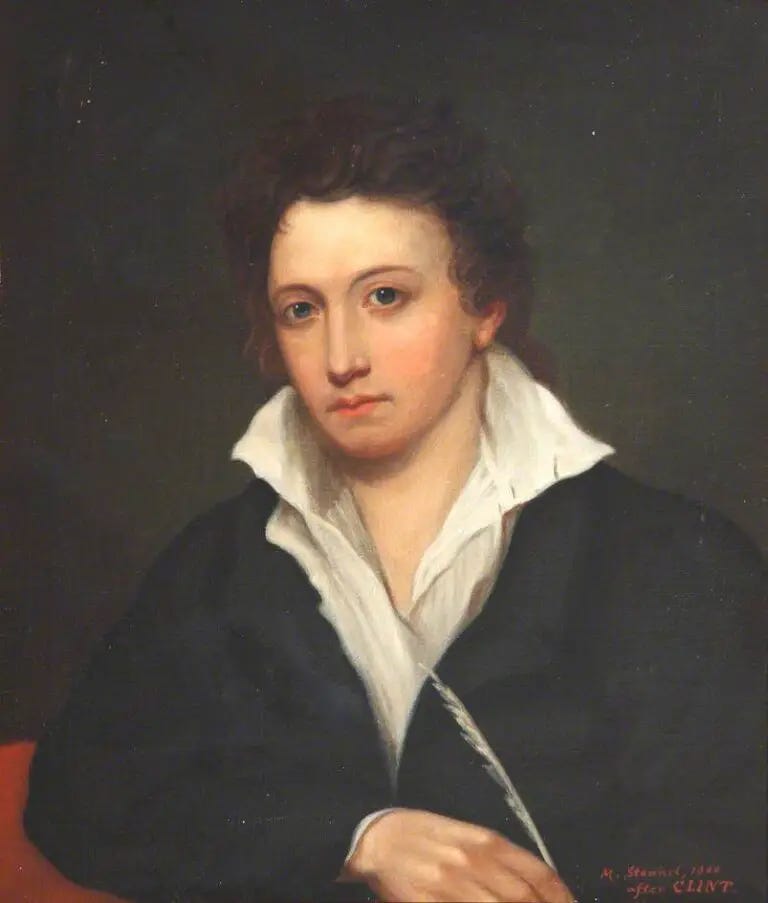Mary Shelley: An Introduction & Her Dream
Byron declared that they each should write a ghost story. While Mary Shelley took a time to decide what she would write about, her story would become the most famous penned during that holiday.
We have a new guest at Top of the Page this month! For, what else can I call it when a character knocks at the door, insisting to be let in? Insisting to be ‘interviewed’? Insisting that it is now her turn to be heard?
Last week I completed a three-post series on Beatrix Potter and her fascination with fungi. For reference, I read Beatrix Potter: a Life in Nature by Linda Lear, a sprawling biography laden with detail, including excerpts from letters and journals. I felt curiously empty when I finished reading, as if I had said farewell to a good friend.
I’ll “see” Beatrix again when I read the second biography about her that I’ve acquired. Meanwhile, I find myself ‘seated at the tea-table’ with another impressive woman. She is also a writer; she also has an interest in the sciences, despite society discouraging such pursuits in ladies.
Her name is Mary Shelley, and she’s got quite a lot to say. I own the Penguin Classics edition of Frankenstein, and I read the introduction which tells the story of her life. Though brief, it is a gem of an introduction. I learned a lot of things about her—and her family!—that made me want to write something of my own.
My friend Hannah and I decided to create a classic novel book club called Teacups & Tomes. Frankenstein was selected to be the first book. Our group will be going over it throughout the month of October (and November’s book will be Little Women, hosted at Hannah’s Substack!).
As I read Frankenstein, I will be listening to Mary and posting about her, much like I did with Beatrix. I also have a couple of biographies I am eager to scour for that one tale, much like Beatrix with her fungi, that will shed a greater light on Mary as a person.
I’ve got some fascinating companions, indeed.
I’ve read Frankenstein before, but it was long enough ago that I remember little about it, except for that final scene. It will be an enjoyable experience to revisit the story with friends, exploring the brain-child of a woman who was both brilliant and controversial. If you would like to join our read-along, request to join the private Facebook group—or simply comment along here.
Mary Godwin was born August 30, 1797 in Somers Town, London, to an unconventional family. While only one of her parents survived to bring her up, the unorthodox nature of her environment must have soaked into her as she entered womanhood, for she went on to live a life just as scandalous. She married the eccentric poet Percy Bysshe Shelley against her father’s wishes and ran away to the continent with him, which is where Frankenstein’s story would later begin.
Her mother, Mary Wollstonecraft, had become notorious for using her voice to protest the treatment of women as second-class citizens. In 1794 she gave birth to an illegitimate daughter named Frances, who would later be cared for by William Godwin along with the younger Mary. Wollstonecraft is known for her treatise A Vindication of the Rights of Woman, one of the earliest works of feminist philosophy.
Young Mary’s father, William Godwin, was a political philosopher who also raised eyebrows. This was a time of change in society, especially with regards to thought and morality, and he was one of the most vocal speakers against tradition.
William Godwin did not believe in marriage, calling it an unfair institution. He and Mary Wollstonecraft were together for several years before she became pregnant with their daughter. Only then was he compelled to break his word, wanting for his daughter and the woman he loved to have a secure life.
Tragically, Mary Wollstonecraft died from birth-related complications one month after her child was born.
Most bookworms are aware of the circumstances surrounding the penning of Frankenstein. In 1816, Mary Shelley, Percy Bysshe Shelley, Lord Byron, and Mary’s stepsister, Jane Clairmont, had gathered during the summer in the scenic Villa Diodati in Switzerland. They passed their time together telling ghost stories.
One day, Byron declared that they each should write a ghost story. While Mary Shelley took a time to decide what she would write about, her story would become the most famous of those penned during that holiday.
When at last inspiration came for Mary’s ghost story, it was in the form of a dream. The party of four had been engaged in a conversation about the possibility of reanimating corpses—essentially taking the place of God. This conversation so unsettled her that she could not find rest.
In the preface she wrote for her book, Mary Shelley describes her dream:
When I placed my head on my pillow, I did not sleep, nor could I be said to think. My imagination, unbidden, possessed and guided me, gifting the successive images that arose in my mind with a vividness far beyond the usual bounds of reverie. I saw—with shut eyes, but acute mental vision—I saw the pale student of unhallowed arts kneeling beside the thing he had put together.
I saw the hideous phantasm of a man stretched out, and then, on the working of some powerful engine, show signs of life, and stir with an uneasy, half-vital motion. Frightful must it be; for supremely frightful would be the effect of any human endeavour to mock the stupendous mechanism of the Creator of the world. His success would terrify the artist; he would rush away from his odious handywork, horror-stricken. … He sleeps; but he is awakened; he opens his eyes; behold, the horrid thing stands at his bedside, opening his curtains and looking on him with yellow, watery, but speculative eyes.
In this way I shall wrap up this post, using Mary’s own words. There is more to come about her, as I am reading two biographies about Mary Shelley. I do not know how long this series will be, nor if it will focus on a specific thing, like Beatrix’s focus was on her fungi. I know only that Mary Shelley has quite a lot to say.
Recently a post was published on Substack titled The Woman who Invented Science-Fiction. It is well worth the read. I will share the link here so that you can further understand the genius of Mary Shelley.









Interesting summary. There are those who believe the preface was written by Percy, however.
Excellent; I believe that I read some of this elsewhere.
Just way general here, but I think the book is a fantastic story, read it multiple times. 5/5
I loved the scene in the cabin with Gene Hackman interacting with The Monster in Young Frankenstein.